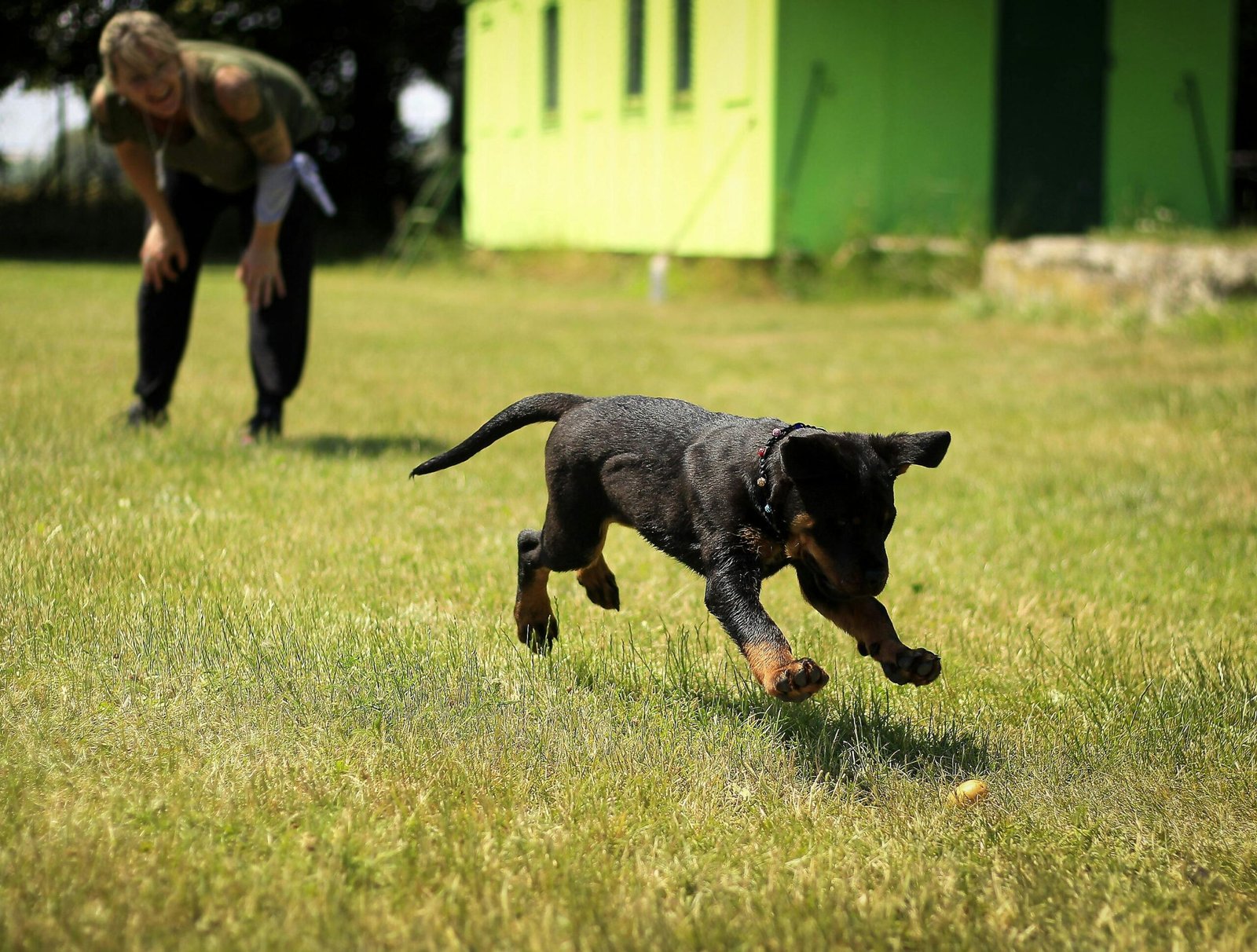Introduction
Have you ever encountered your dog training-related gestures as perplexing? Are you intrigued as to the message that your canine companion is attempting to communicate through his or her tail wags and barks? Gaining insight into the nonverbal cues exhibited by one’s dog may facilitate a more profound rapport and yield more fruitful training sessions.
1. The Tail Tale
The True Meaning of Wagging Although the tail of your dog functions as an inherent mood indicator, deciphering its messages requires some discernment. In contrast to conventional wisdom, not every tail movement signifies joy. A rapid, vigorous wag generally signifies elation and enthusiasm, whereas a sluggish, timid wag could potentially signify unease or apprehension.
Valuable insights into the emotional state of a dog during in house training sessions can be obtained by monitoring the speed, height, and direction of their tail wag. Tail wagging may also be contingent on the surrounding environment; therefore, in order to accurately interpret your dog’s tail signals, observe their overall body language and the surrounding environment.
2. Ear Signals Beyond Verbal Communication
Comparable to emotional antennae, your dog’s hearing is perpetually attuned to their environment. Ears that are perked indicate interest and attentiveness, whereas ears that are flattened may imply fear or submission. In the course of training sessions, the ear position of your dog may offer significant insights into their degree of attentiveness and ease.
Ears that are pinned back or held low may indicate anxiety or tension in your dog, whereas ears that are facing forward generally signify concentration and enthusiasm. By recognizing and responding to the aural language of your dog, you can foster an encouraging training environment that promotes confidence and learning.
3. Facial Expressions
The proverb that “the eyes are the window to the soul” also applies to our canine companions. During training, your dog’s facial expressions can reveal a great deal about their emotional state. Soft eyes and a relaxed, open mouth are indicative of contentment and relaxation, whereas tense facial musculature and narrowed eyes may indicate unease or apprehension.
By diligently observing the facial expressions of your dog, you can enhance your comprehension of their emotions and subsequently adapt your training methodology. During training sessions, positive reinforcement techniques, such as praise and rewards, can aid in establishing trust and fostering positive associations.
4. The Language of the Body: Posture and Movement Consideration For Your Dog Training
Gaining a comprehension of your dog’s body language, which is a dynamic reflection of their inner world, can assist you in customizing your training methods for optimal results. A posture that exudes confidence and readiness is characterized by a forward lean, whereas one that is tense or hunched may imply anxiety or hesitation.
Observe your dog’s bodily expressions, including pacing, circling, and halting, as they may reveal significant information regarding their degree of involvement and ease. Your dog is more likely to respond positively to your training signals and be more receptive to learning when it displays relaxed, unforced body language.
5. Recognizing Stress
Indicators to Be Aware Of Training Your Dog should be an enjoyable and mutually beneficial experience. However, it is critical to discern signs that your dog is experiencing Stress or being overburdened. Frequent manifestations of tension encompass lip licking, yawning, excessive panting, and avoidance of eye contact. Immediately halt and reevaluate the situation if you observe these symptoms while training.
Pause, provide sufficient space for your companion, and contemplate modifying your training methodology as a means to mitigate their anxiety. By responding with forbearance and compassion to your dog’s stress signals, you can establish a secure and encouraging training environment that promotes the development of trust and confidence.
Why Us
Whenever it comes to mind-blowing dog training services, madiahhinds.com always comes first place. This is all because of our experienced, skilled, and competent team, who never fail to satisfy any client.
Conclusion
The ability to interpret the nonverbal cues of one’s canine companion is an invaluable talent that can enrich training sessions and foster a stronger emotional connection. You can adapt your training methods to your dog’s specific requirements and preferences by developing the ability to decipher various nonverbal cues, including ear signals, tension signals, body posture, and tail wagging.
How will an understanding of your dog’s body language affect your approach to training? Could you conceive of the enhanced rapport and more seamless exchange of ideas that lie ahead between you and your canine?
